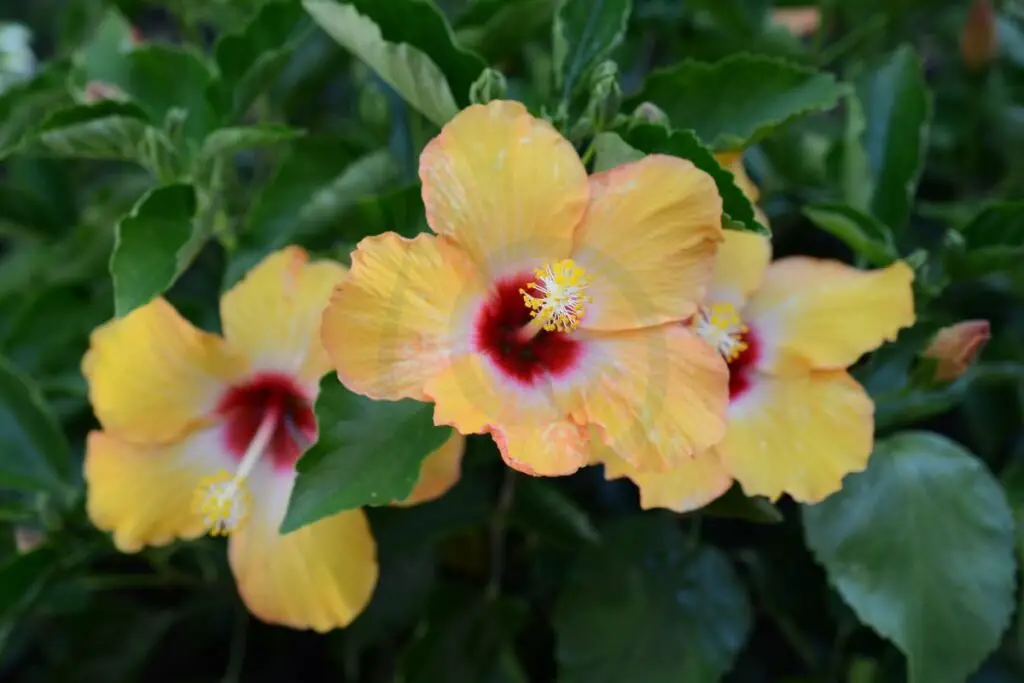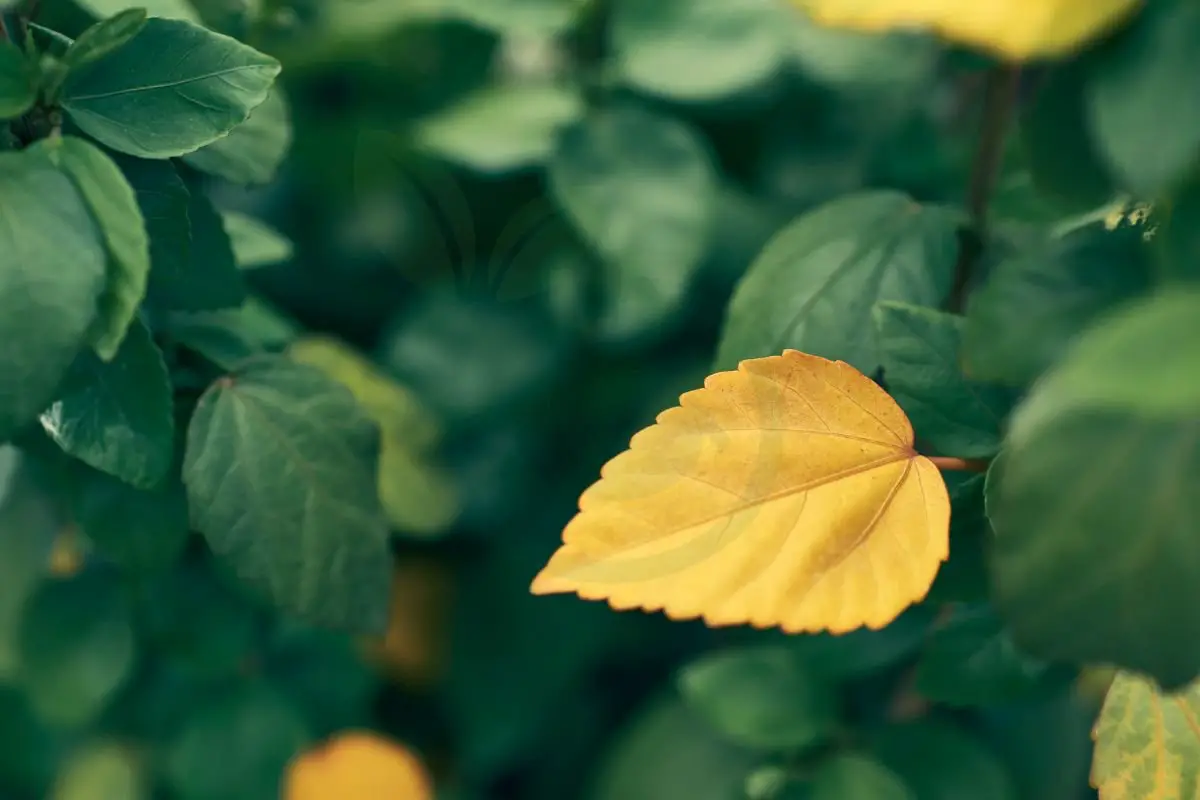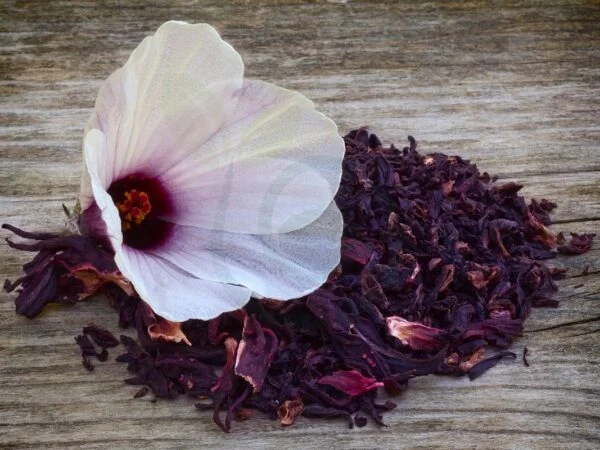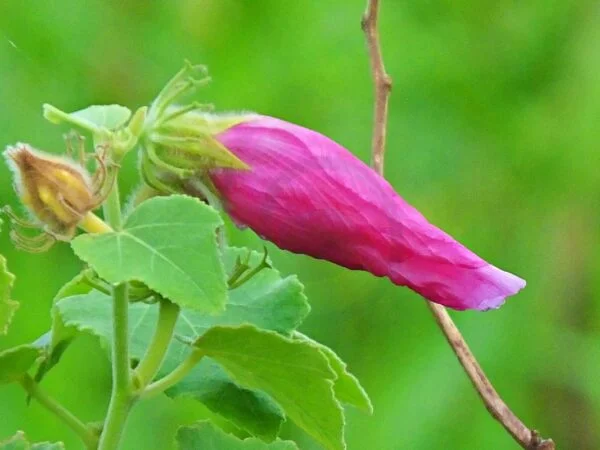Wondering what yellow leaves on a hibiscus plant mean? Don't fret! We've got you covered with expert insights and guidance to help your hibiscus thrive.
Curious about the reasons behind those yellow leaves? Stay tuned as we delve into the common causes and simple solutions for reviving your hibiscus back to health. From watering tips to sunlight requirements, we've got all the information you need to ensure your hibiscus stays vibrant and lush.
Ready to transform your hibiscus plant into a flourishing beauty once again? Let's explore together how to decode the signals those yellow leaves are sending and get your plant back on track for a blooming success story.
Key Takeaways
- Identify Yellow Leaves: Monitor your hibiscus plant for yellow leaves as it can indicate various issues.
- Proper Watering: Ensure your hibiscus receives adequate but not excessive water to prevent yellowing leaves and sun.
- Optimize Light Exposure: Place your hibiscus in a location with sufficient sunlight to promote healthy leaf color.
- Address Nutrient Deficiency: Provide necessary nutrients through fertilization to avoid yellowing leaves due to deficiencies.
- Manage Environmental Factors: Control temperature and humidity levels around your hibiscus plant to prevent leaf discoloration.
- Combat Pests: Regularly inspect and treat your hibiscus for pests that can cause yellow leaves.
- Prevent Yellowing: Implement a consistent care routine tailored to your hibiscus plant's needs to maintain vibrant foliage.
- Understand Dormancy: Recognize the natural dormancy periods of hibiscus plants and adjust care accordingly.
Identifying Yellow Leaves
Watering Issues
Maintain adequate moisture levels for hibiscus plants by adjusting watering frequency based on weather conditions. Use well-draining soil to prevent waterlogging, which can lead to yellow leaves. Regularly monitor soil moisture to ensure it's neither too dry nor too wet.
Light Exposure
Provide sufficient sunlight for hibiscus growth, but avoid direct harsh exposure that can cause leaf discoloration. For indoor hibiscus plants, consider using artificial lighting to supplement natural light sources.
Nutrient Deficiency
Prevent yellow leaves by ensuring hibiscus plants receive a balanced fertilizer rich in essential nutrients. Watch out for signs of iron chlorosis, such as yellowing between leaf veins. Consider using organic fertilizers to promote long-term soil health and prevent deficiencies.
Environmental Stress
Protect hibiscus plants from extreme weather conditions like frost or excessive heat, which can cause leaf yellowing. Shield hibiscus leaves from strong winds and drafts that may damage the foliage. Maintain consistent temperature levels to reduce stress on the plants.
Watering Correctly
Over-Watering Signs
Yellow leaves on a hibiscus plant may indicate over-watering. Watch for wilting, even with moist soil, as this suggests the roots are struggling. Inspect for yellow leaves along with waterlogged roots, a clear sign of excessive watering. Adjust your watering routine to prevent root rot.
Under-Watering Signs
When it comes to under-watering signs, be on the lookout for dry and crispy leaves on your hibiscus plant. It's essential to monitor the moisture levels in the soil regularly to ensure proper hydration. During hot weather, consider adjusting your watering frequency to meet the plant's needs.
Ideal Watering Practices
For optimal hibiscus care, it's crucial to water deeply but infrequently. This helps promote healthy root growth and prevents issues like root rot. Consider installing a drip irrigation system for consistent and efficient watering. Remember to avoid wetting the foliage directly during watering sessions to reduce the risk of diseases.
Maximizing Light Exposure
Ideal Light Conditions
To ensure optimal growth, aim for 6-8 hours of sunlight daily for your hibiscus plant. This exposure helps in photosynthesis and overall health. Rotate plants periodically to promote even light distribution across all parts. When indoors, use sheer curtains to diffuse intense sunlight and prevent leaf burn.
Signs of Low Light
Detect signs of inadequate light by observing leggy growth and pale leaves on your hibiscus plant. These are clear indicators of low light conditions affecting the plant's development. watch for reduced flowering, as insufficient light can hinder blooming. For indoor hibiscus plants, consider supplemental grow lights to compensate for insufficient natural light.
Adjusting Light Exposure
When transitioning hibiscus plants to increased sunlight, it is crucial to gradually acclimate them to prevent shock. Start by exposing them to small increments of additional light each day. If needed, relocate the hibiscus to brighter spots in your garden or home where they can thrive. To protect the plants from harsh sunlight, consider using shade cloth to filter out excess intensity.
Addressing Nutrient Deficiency

Essential Nutrients
Hibiscus plants require nitrogen, potassium, and phosphorus in balanced amounts for healthy growth. Micronutrient supplements can be beneficial to ensure optimal nutrient levels. Regularly testing the soil pH is crucial to assess nutrient availability accurately.
When it comes to enhancing soil quality, adding organic matter can significantly improve the structure, promoting better nutrient absorption. Mulching is another effective method to retain moisture in the soil, aiding in overall plant health. Avoiding compacted soil is essential for fostering healthy root development in hibiscus plants.
Soil Amendments
- Pros:
- Improves soil structure
- Enhances nutrient absorption
- Cons:
- Requires regular maintenance
- May attract pests if not managed properly
Fertilizing Frequency
To ensure optimal growth, fertilize hibiscus plants consistently during the growing season. Following recommended dosage instructions is vital to prevent over-fertilization, which can harm the plant. Adjust the frequency of fertilization based on how the plant responds to maintain its health.
Environmental Factors
Temperature Stress
Frost Effects
- Protect hibiscus from frost by using covers or bringing them indoors.
- Yellow leaves indicate frost damage, prune affected parts for new growth.
Heat Stress
- Provide shade during peak heat to prevent stress.
- Increase watering, watch for wilting as a sign of heat stress.
Wind and Draft Impact
- Shield hibiscus from strong winds to avoid leaf damage.
- Avoid drafty areas, consider windbreaks for outdoor plants.
The previous section addressed "Addressing Nutrient Deficiency." When hibiscus plants experience temperature stress, their leaves can turn yellow due to various environmental factors. Frost damage is a common issue that can cause yellowing leaves. To mitigate this, protect the plants from frost by using covers or bringing them indoors during cold spells. Yellow leaves are an indicator of frost damage, so it's crucial to prune affected parts after a frost event to stimulate new growth.
In hot weather conditions, hibiscus plants may suffer from heat stress, leading to yellow leaves. To combat this, provide shade for the plants during peak heat hours and increase watering frequency to keep them hydrated. Monitoring the plants for signs of heat stress like wilting can help in early detection and prevention of further damage.
Wind and drafts can also impact hibiscus plants, causing their leaves to turn yellow. Shielding the plants from strong winds can prevent leaf damage, while avoiding placing them near drafty areas indoors is essential. For outdoor hibiscus plants, considering windbreaks can offer protection from strong gusts that may harm the foliage.
Pest Management
Common Pests
Aphids, spider mites, and whiteflies are common pests that affect hibiscus plants. These pests can cause yellow leaves by sucking out vital plant nutrients. Ladybugs are natural predators that can help control these pests effectively. Regularly check the underside of leaves for any signs of pest infestation to catch them early.
Preventive Measures
Maintain good garden hygiene to prevent pest infestations on hibiscus plants. Remove any debris or fallen leaves promptly as they can attract pests. Before introducing new plants to your garden, quarantine them to ensure they are not carrying any pests. Using neem oil or insecticidal soap as preventive treatments can also deter pests from attacking your hibiscus.
Treatment Options
Opt for organic pest control methods as the first line of defense against common hibiscus plant pests. These methods are environmentally friendly and safe for beneficial insects. For specific pests like aphids or spider mites, use targeted treatments to address the issue effectively without harming the plant. In severe cases of pest infestation, it is advisable to seek assistance from a plant expert who can provide professional help in managing the situation.
Preventing Yellow Leaves
Regular Monitoring
Inspect hibiscus plants weekly for signs of stress. Keep a gardening journal to track plant health. Act promptly upon noticing any abnormalities.
Seasonal Care Tips
Adjust care routines based on seasonal changes. Protect plants during extreme weather shifts. Prune hibiscus after flowering for optimal growth.
Proactive Pest Control
Introduce beneficial insects for natural pest control. Use physical barriers like row covers to deter pests. Implement companion planting to repel pests.
Understanding Dormancy
Dormancy Signs
During dormancy, notice reduced growth and flowering, signaling a natural slowing down of the hibiscus plant's activity. This period is crucial for the plant to conserve energy. To prepare plants for dormancy, reduce watering gradually as the plant's needs change. For container-grown hibiscus plants, it's essential to bring them indoors before frost to protect them from extreme weather conditions.
Care During Dormancy
When hibiscus plants enter dormancy, it is important to adjust their care routine accordingly. Reduce watering frequency since the plant's growth has slowed down significantly. Avoid fertilizing dormant hibiscus plants as they do not require additional nutrients during this period. Despite being in dormancy, hibiscus plants still need adequate light to maintain their health and prepare for the upcoming growing season.
Tailoring Hibiscus Care
Customized Watering Plan
Tailor watering schedules to meet the specific needs of your hibiscus plant. Take into account factors such as humidity levels and temperature variations. Make adjustments to the watering frequency based on how the plant reacts to the current watering routine.
Adjusting to Seasonal Changes
Adapt your care routines according to the changing seasons to ensure optimal growth for your hibiscus. Shield your plants from extreme temperatures by providing adequate protection. Keep a close eye on your plant's well-being, especially during transitions between seasons.
Summary
Taking care of your hibiscus plant is essential to prevent those pesky yellow leaves. Ensure you're watering correctly, maximizing light exposure, addressing nutrient deficiencies, managing pests, and understanding dormancy. By tailoring your care routine to suit your hibiscus plant's needs, you can keep those leaves green and vibrant. Remember, a little effort goes a long way in maintaining a healthy and beautiful hibiscus plant in your garden.
o ahead and put these tips into action to see your hibiscus thrive! Share your newfound knowledge with fellow plant enthusiasts too. Your hibiscus will thank you with its stunning blooms! Keep nurturing and enjoying the beauty of your plants.
Frequently Asked Questions
What are the common causes of yellow leaves on a hibiscus plant?
Yellow leaves on a hibiscus plant can be due to overwatering, insufficient light, nutrient deficiency, environmental stress, pests, or dormancy. Identifying the specific cause is crucial for effective treatment.
How can I address nutrient deficiency in my hibiscus plant causing yellow leaves?
To address nutrient deficiency leading to yellow leaves, consider fertilizing with a balanced fertilizer rich in nitrogen, phosphorus, and potassium. Ensure proper application according to the instructions to provide essential nutrients for healthy leaf growth.
What are effective pest management strategies for preventing yellow leaves on my hibiscus plant?
Implement integrated pest management techniques such as inspecting plants regularly for pests, using natural predators like ladybugs, applying neem oil or insecticidal soap, and maintaining overall plant health to prevent pest infestations that can cause yellowing of leaves.
How can I prevent yellow leaves on my hibiscus plant during dormancy periods?
During dormancy periods, reduce watering frequency while still ensuring the plant receives adequate moisture. Place the hibiscus in a cooler location with reduced light exposure. Avoid fertilizing during dormancy and monitor the plant's condition closely for any signs of stress.
What are some tips for tailoring hibiscus care to prevent yellow leaves?
Tailor your hibiscus care routine by adjusting watering schedules based on the plant's needs, providing sufficient light exposure without direct sunlight during peak hours, conducting regular soil tests for nutrient levels, maintaining proper humidity levels, and promptly addressing any issues to ensure optimal growth and vibrant foliage.
Image Source: Paid image from CANVA




